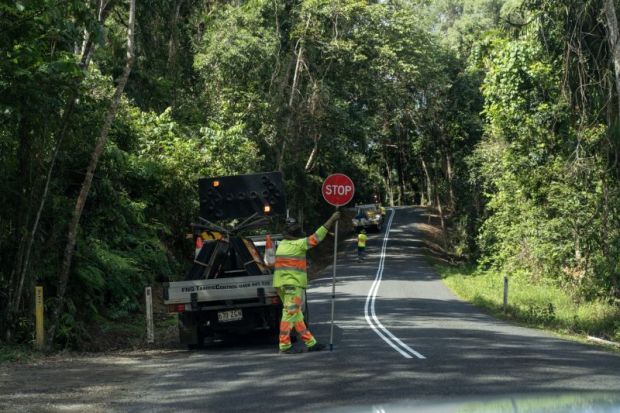Australia’s new international education caps face a challenge from top-ranked institutions amid disputes over data and questions surrounding the underpinning legislation’s constitutionality.
After months of speculation Canberra has announced that new foreign student enrolments at publicly funded universities will be limited to 145,000 in 2025, roughly the same as 2019 levels.
But the difficulties of implementing such a policy in practice have been underlined by a debate around institutional level data submitted to the government by institutions. The nation’s biggest international student recruiter, the University of Sydney, has denied that the enrolment figures it supplied to the Department of Education – subsequently revised to calculate Sydney’s cap – were wrong.
“Some universities have discovered…that the data that they have certified as accurate and provided to us was, in fact, incorrect,” the department’s deputy secretary, Ben Rimmer, told a Senate committee hearing on 26 August, the day before the caps’ release. “Both the University of Sydney and the University of Melbourne fall into that category.”
A Sydney spokeswoman said data reporting was complicated by “ambiguity in classification and interpretation of data” but insisted that the “most recent international student dataset” provided to the government had been “accurate”.
Melbourne said it would need to “seek clarity from the government about the complex methodology that was used to inform their figures”. Vice-chancellor Duncan Maskell said his university remained “strongly opposed to this cap” and was “taking time to assess the financial and other implications”.
While many other vice-chancellors have welcomed the “financial and planning certainty” of being told their caps, some say the figures may yet change. “The exact numbers are still subject to data verification between universities and the Department of Education,” an Australian National University spokeswoman said.
“There is inherent complexity in how the department is choosing to manage the allocations for each institution,” Southern Cross University said.
Much of the confusion surrounds the government’s use of a measure called “new international student commencements”. Sources say this metric has never been used before and is difficult to reconcile with providers’ internal figures.
While most universities declined or ignored Times Higher Education’s request to reveal their institutional caps, a handful of mostly medium-sized institutions complied. University of Newcastle deputy vice-chancellor Kent Anderson said he was “comfortable” with the allocation of 1,600 new enrolments, which was 2 per cent higher up on previous commencements and offered “a stable path for growth into the future”.
The University of Tasmania said its indicative allocation of 2,200 was almost 500 higher than its 2023 figure. “This is a sensible and coherent approach to managing some of the post-pandemic immigration challenges we are facing as a nation while supporting the higher education sector, particularly in regional areas,” said vice-chancellor Rufus Black.
Deakin University vice-chancellor Iain Martin said his allocation of 5,800 was “close to” the institution’s commencements in 2019 and 2023, and “broadly in line with financial and operational plans for 2025”. University of Wollongong interim vice-chancellor John Dewar said his figure of 3,700 offered “certainty, clarity and transparency”.
But Charles Darwin University said its indicative cap of 2,200 new overseas commencements fell short of the institution’s plans. University of Technology Sydney said its allocation of 4,800 new overseas commencements was similar to its 2019 and 2023 figures but lower than 2024 and projections for 2025.
Western Sydney University said its cap was almost 1,000 lower than this year and 23 per cent down on its 2025 forecast. “We are Australia’s most culturally diverse and internationally facing community and today’s decision is a serious blow,” said vice-chancellor George Williams.
Queensland University of Technology said it had been looking to international enrolments to help it “ride out” two successive deficits. “Our…strategy had us going from a pretty low base of 18 per cent to 25 per cent foreign students,” vice-chancellor Margaret Sheil told ABC Radio Brisbane. “We won’t be able to do that now.”
Education minister Jason Clare said universities’ overall international enrolments would be roughly the same as in 2023. “For some…big universities, it will be lower than it was last year,” he told journalists. “For some of the smaller universities…that have borne the brunt of ministerial direction 107…it will be higher.
“The big winners are regional universities. Almost every regional university will be able to enrol more international students next year than they did last year.”
Regional Universities Network chief executive Alec Webb said his members had suffered the “slowest post-Covid recovery of international student enrolments of anyone in the sector” and the caps ushered in “an end to the uncertainty”.
But Group of Eight chief executive Vicki Thomson accused Mr Clare of “clumsy sleight of hand” by conflating visa processing with enrolment quotas. “Caps will not undo the damage of ministerial direction 107,” she said. “International students simply will not study where the Australian government tells them to.”
Some university representatives blame large Go8 members like Sydney and Melbourne for instigating the government’s crackdown by allowing international students to comprise almost half of their enrolments.
“ATN universities are not the ones that crashed the system,” Australian Technology Network executive director Ant Bagshaw told the Senate committee. “Yet we and Australia are suffering for it.”
Meanwhile, Mr Clare has played down a warning from Professor Williams – a renowned constitutional lawyer – that the government’s legislation could be vulnerable to challenge under Section 99 of the Constitution, which dictates that no federal law can preference one state over another.
“If one jurisdiction or one university was carved out or exempt from this system, that…would create a constitutional issue,” Mr Clare acknowledged. “No jurisdiction and no institution that enrols international students will be exempt from this.”






